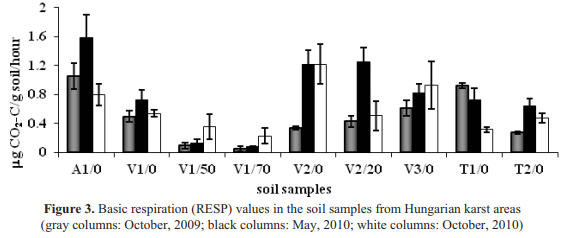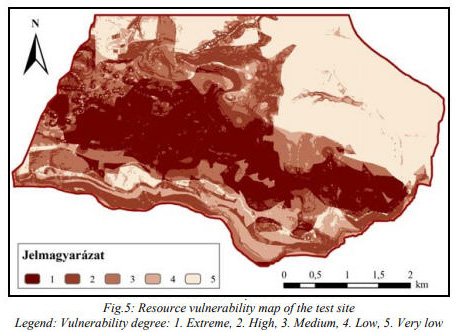Aim of the study:
The epikarst researches conducted on karst areas are important because of the protection of natural values and subsurface water resources, for ensuring sustainable management (soil fertility), and because of the need of sustainable presentation in Natural Parks. The preservation of karst subsurface water resources is a definite national and social necessity and expectation. The damages and pollution of karsts occurs through the karst’s epikarstic systems which are in connection with the surface. This gives a special significance to the cognition of natural processes taking place in epikarstic systems and the analysis of changes due to human impacts.

Our research aim is to study the processes, the territorial and local distinctions of karst dissolution (Gömör-Tornai-karst, Tapolca-karst) more precisely, with new microbiological, vegetal-ecological examinations, and the measurements of the biological activity of soil (the production of carbon-dioxide), which are carried out in (natural, and human-interfered) karst areas. The examination of epikarst systems takes place in two spots, at Gömör-Tornai- and at Tapolca-karst. The areas, which are chosen for the research, represent a different-themed karst ecosystem (the land-usage, the measure of anthropogenic effects, the water-supply, the soil-thickness, etc. differs). In both of the examined area, we choose dolines for the measurement of carbon-dioxide content of soil air and microclimate (repeated seasonally). In every spot, we mark three stations, one in the northern, one in the southern part, and one in the bottom of the doline, in order to examine the effect of exposure.

We search for the connection between microclimatic phenomena and values/rates of soil climate (temperature and moisture of the soil, pH, carbon-dioxide concentration), to know the spatial distinctions, diurnal and seasonal changes. During our last years, researches and monitoring measurements were capable to demonstrate the seasonal distinctions, variances in one hand, and in the other hand, we were able to reveal the daily dynamics and spatial differences of the temperature of the air and soil, at the various exposure parts of the dolines.
Members of the epikarst research team:
János Móga, Andrea Kériné Borsodi, Mária Szabó, László Mari, Klaudia Kiss, Mónika Knáb, András Kéri, Veronika Iván, Gabriella Büki, Katalin Fehér, László Lippmann, Melinda Megyes, Júlia Aszalós
Publications:
Iván , V., Móga, J., & Fehér, K. (2011). Karst vulnerability analyzes of the karst of Bükk Plateau. Karstdevelopment, 16, 167-183.
Knáb. M, Szili-Kovács, T., Kiss, K., Palatinszky, M., Márialigeti, K., Móga, J., & Borsodi, A.K. (2012). Comparison of soil microbial communities from two distinct karst areas in Hungary. Acta microbiologica et immunologica hungarica, 59(1), 91-105.
Móga , J., & Horváth , G. (2004). The viewpoints of the indication of the surface protection areas connected to caves. In Soil effect on karst processes (pp. 89106). Budapest: Pethoes Tsa Press. Móga, J., Mari, L., & Kiss, K. (2010). The analysis of karst changes (degradation) of Tapolca karst. Hungarian Landscape Ecology Conference Budapest, 13-15 May, 2010, (pp. 177-186).
Móga, J., Klaudia, K., Szabó, M., Kériné Borsodi, A., Kéri, A., Mari, L.,Iván, V. (2013, February). Hazards and landscape changes (degradations) on Hungarian karst mountains due to natural and human effects. Journal of Mountain Science, 10(1), 16-28.
Móga, J., Mari, L., & Kiss, K. (2010). The analysis of karst changes (degradation) of Tapolca karst. Hungarian Landscape Ecology Conference Budapest, 13-15 May, 2010, (pp. 177-186).
Móga, J., Strat, D., Iván, V., Mari, L., Kiss, K., Szabó, M., Borsodi A. & Csüllög, G. (2017). Changes of the karst landscape and epikarst system in the area of the Tapolca karst terrains, North-West Balaton Highlands, Hungary. In: Forum Geografic, 16(1), 12-25.
